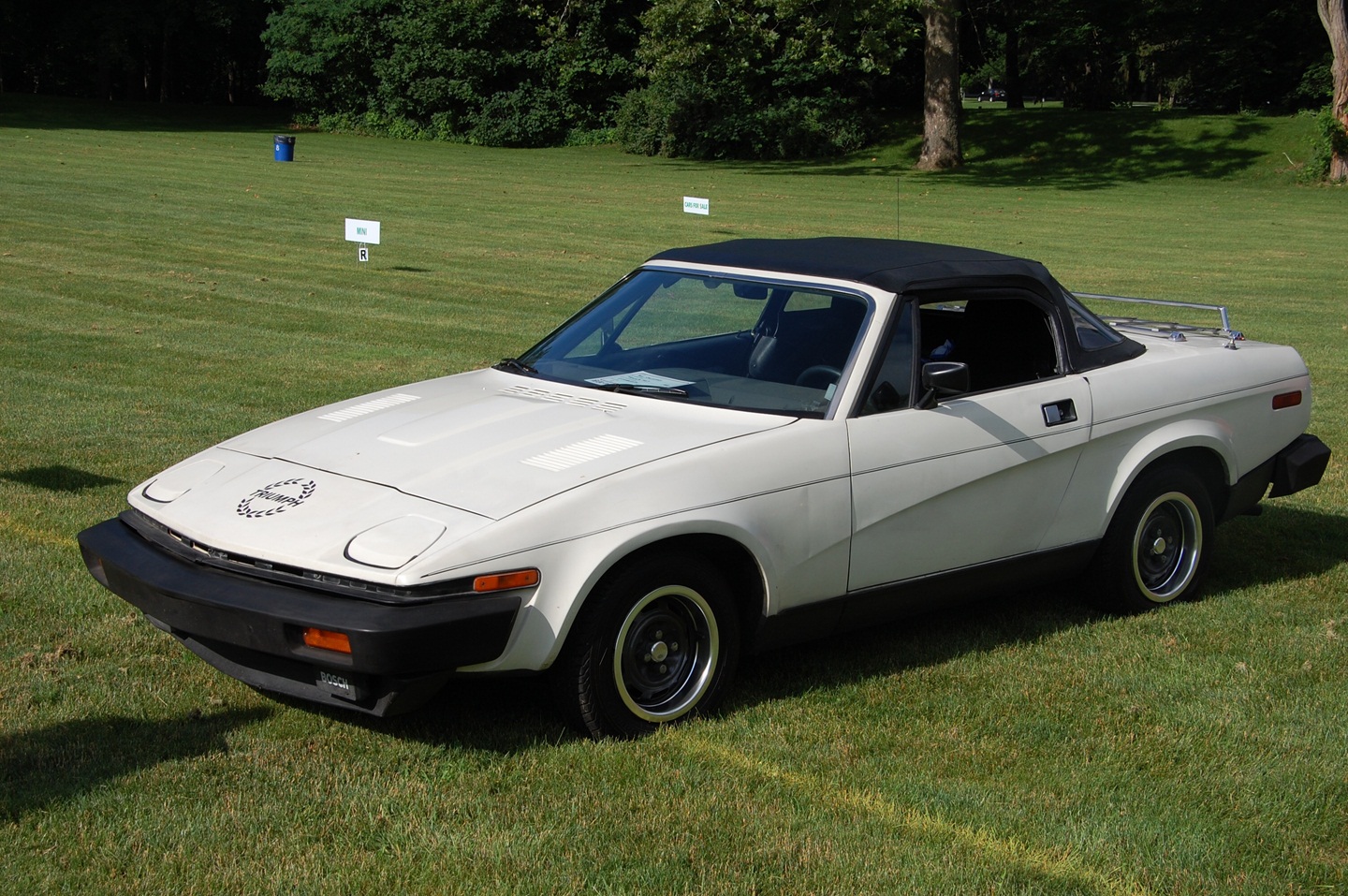-
Insurance
InsuranceAbout our productsLearn about insuringGet a quote Get current values, historical values, model history and more.
-
Valuation
ValuationHagerty valuation toolLook up a vehicle value Get current values, historical values, model history and more.
-
Events
EventsHagerty official eventsHagerty ClubhouseEvent calendar
-
Entertainment
EntertainmentMore to explore
- Portal login
1981 Triumph TR7
Base DHC 2 L
Vehicle values by condition
Fair
Condition 4
£3,300
#4 cars are daily drivers, with flaws visible to the naked eye. The chrome might have pitting or scratches, the windshield might be chipped.
Good
Condition 3
£4,800
#3 cars could possess some, but not all of the issues of a #4 car, but they will be balanced by other factors such as a fresh paint job or a new, correct interior.
Excellent
Condition 2
£8,100
#2 cars could win a local or regional show. They can be former #1 cars that have been driven or have aged. Seasoned observers will have to look closely for flaws.
Concours
Condition 1
£12,700
#1 vehicles are the best in the world. The visual image is of the best car, unmodified, in the right colours, driving onto the lawn at the finest concours.
Insurance premium for a
1981 Triumph TR7 Base DHC 1998
valued at £4,800
£137.86
/ year*
History of the 1980 - 1981 Triumph TR7

1980 - 1981 Triumph TR7
Triumph TR7 (Coupe/Convertible), 1975 - 1981
The Triumph TR7 was in production from 1975 until 1981. Styled in house by Harris Mann, it is a front- engine, rear wheel drive sports car seating two people.
The Triumph TR7 was Triumph's replacement, on paper, for the TR6. However, its position in the range meant that it could be argued to be a better replacement for the GT6 which ceased production two years earlier. It was a two litre coupe based heavily on the current small saloon car range. That meant Dolomite underpinnings; independent double wishbones at the front with a live axle and coil springs at the rear. The engine was Dolomite-derived too; effectively a Dolomite Sprint engine with the 8v head from the 1850. Early cars used a four speed gearbox from the Dolomite, upgraded later to the five speed from Rover's SD1.
The TR7 was launched in America in January 1975, with UK production beginning in May 1976 through intense demand in the States at first. It was launched solely as a coupe, with a single engine and gearbox available. Five speed and automatic options were made available during 1976, with the five speed manual standardised in place of the four speed later. The interior trim was updated in March 1977, from corduroy to vinyl with tartan inserts in red or black. Industrial action at the Speke factory meant production moved in 1978 to Triumph's Canley factory, and it would subsequently move again to the Rover factory in Solihull in 1980. Bodies were initially built in Speke, but later moved to Swindon when assembly changed to the Midlands. Seat trim was revised once again to plaid in tan or navy while at Canley, and again to velour in the same colours in 1980 at Solihull.
1979 saw the launch of a convertible model, while Jubilee and Spider special editions were also created. The factory Sprint programme was abandoned after just a handful of prototypes, but 16v TR7s are popular as aftermarket modifications. Many have also fitted the Rover V8, but it is better to discuss these cars under the banner of the TR8 (their production equivalent). The TR7 was not replaced, arguably until 1995 when Rover Group launched the MGF. By the end of production in 1981 Triumph had sold 141232 TR7s, of which around 28000 were dropheads.
The TR7 is undoubtedly a more sporting drive than the Dolomite, but it doesn't have the same hairy chested machismo of the earlier TR models. It's more cultured, and refined, a better everyday prospect. Neither manual gearbox has an especially pleasant action but both do the job, while the 2.0 engine has plenty of power for the package. Most of the drivetrain is shared, so places such as RImmers and Robsport can help with parts.
Inner and outer sills can be iffy, while another structurally important rust spot is the rear trailing arms. Windscreen surrounds, the heater inlet and the bonnet vents are all prone to rust, and the latter two are hard to de-rust and to paint. The screen surround is easy to check, by checking the chrome strip is well seated and that no rot is eating into the upper bulkhead.
The later the TR7 the better built, so the Solihull cars are more desirable than the Speke cars with the Canley cars somewhere in the middle. Dropheads are undoubtedly most desirable, likewise the five speed cars. Overall, a late drophead is most desired, while an early four speed coupe will be less desirable to the majority.
Competitors would include the Ford Capri and Opel Manta perhaps, but these both had four seats. The Lancia MonteCarlo was more expensive but may be a potential rival, while nowadays TR7 fanciers might also consider the Mazda MX-5. The MGB was considered an in house rival, but by the launch of the TR7 was an anachronism rather than a genuine alternative.
All 1981 Triumph TR7 body types
| Year | Make | Model | Submodel | Body Type | Engine size | Average value |
|---|---|---|---|---|---|---|
| 1980 | Triumph | TR7 | Base | DHC | 2 L | £ 3,300 4,800 8,100 12,700 |
| 1975 | Triumph | TR7 | Base | FHC | 2 L | £ 2,000 4,400 6,700 11,400 |
Hagerty Newsletter
Get your weekly dose of car news from Hagerty UK in your inbox

ADVERTISEMENT